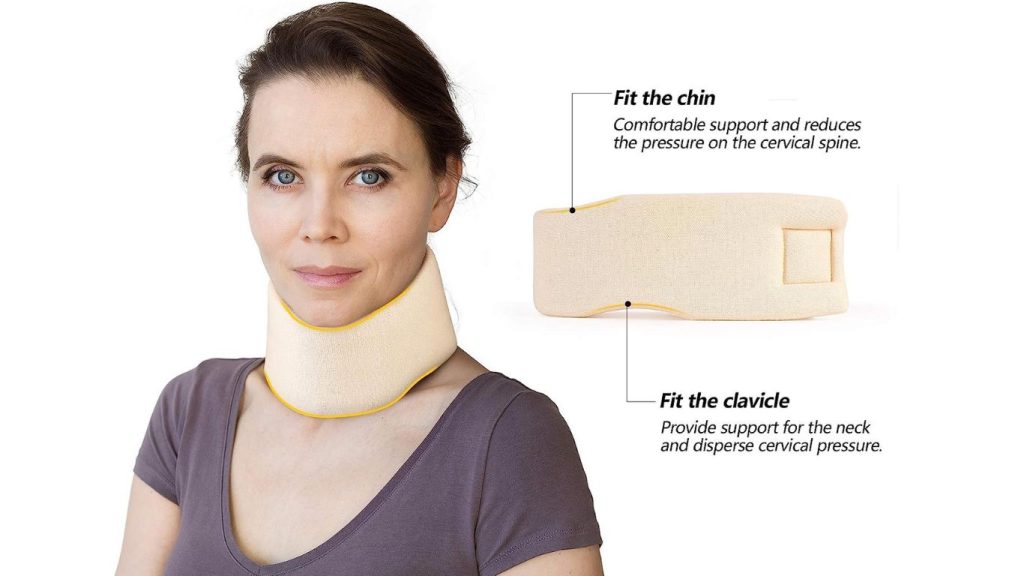Neck braces, also known as cervical collars, play a crucial role in various medical scenarios, from post-operative recovery to providing support after traumatic injuries. While they might seem straightforward, wearing a neck brace properly ensures its efficacy and your comfort. This article dives deep into the world of neck braces, guiding you on their correct usage.

Understanding the Role of a Neck Brace
Before delving into the how-to, it’s essential to grasp why someone might need a neck brace. Primarily, they:
- Limit Mobility: By restricting the movement of the neck, they allow injuries or surgical sites to heal.
- Provide Support: They offer structural support, alleviating pain and discomfort.
- Aid in Recovery: Post-operative or after certain treatments, they ensure the neck remains stable for optimal recovery.

Types of Neck Braces
There are mainly two types:
- Soft Neck Braces: Made of soft materials, these provide minimal support, mainly used for therapeutic reasons or minor injuries.
- Rigid Neck Braces: Constructed from harder materials, they offer robust support, commonly used post-surgery or for more severe injuries.
Step-by-Step Guide to Wearing a Neck Brace
1. Ensure Proper Sizing
- Measurement: Measure the distance from the base of your chin to the top of your collarbone. This gives you the height of the brace.
- Fit Check: A properly-sized brace should feel snug but not overly tight. You shouldn’t be able to move your neck freely, but it shouldn’t cause discomfort.

2. Positioning the Brace
- Open or unfold the brace.
- Align it so that the more massive or broader portion sits under the chin.
- Ensure it sits comfortably on the shoulders and that there’s no excessive pressure on any specific area.
3. Securing the Brace
- Most braces come with Velcro straps.
- Wrap them around the neck, ensuring even tightness. Avoid making it so tight that it becomes uncomfortable or restricts breathing.
- For rigid braces, they might come with additional straps or clips. Ensure all are securely fastened.
4. Double-Checking the Fit
- Once secured, you shouldn’t be able to move your head side-to-side or up-and-down.
- Check for gaps between the brace and your skin. If there are significant gaps, you might need a different size or fit.
Read Also : How to Sleep with Neuropathy in Feet

5. Wearing Over Extended Periods
- Skin Care: If you’re required to wear the brace continuously, ensure you clean your skin daily to avoid irritations. Use a damp cloth to wipe down the area gently.
- Brace Care: Clean the brace according to the manufacturer’s instructions. Soft braces can often be hand-washed with mild soap, while rigid braces can be wiped down.
6. Sleeping with a Neck Brace
- For those who need to wear it 24/7:
- Use a firm pillow that provides adequate support. Avoid pillows that angle your head upwards.
- Sleep on your back. Side sleeping might cause the brace to shift.
Dos and Don’ts of Wearing a Neck Brace
Dos
- Follow Medical Advice: Always use the neck brace as recommended by your healthcare provider.
- Check for Wear and Tear: Inspect the brace regularly. If it shows signs of significant wear or doesn’t provide ample support, it might be time for a replacement.
- Seek Comfort: If you feel excessive discomfort, pain, or pressure sores, consult your doctor.
Don’ts
- Don’t Modify the Brace: Avoid the temptation to trim or adjust the brace yourself. If it doesn’t fit correctly, seek medical advice.
- Avoid Overexertion: Even with a brace, it’s essential to avoid activities that might strain your neck further.
- Don’t Neglect Hygiene: Extended wear can lead to skin issues. Ensure both your skin and the brace are cleaned regularly.

Conclusion
A neck brace, when worn correctly, can significantly aid in recovery and support. While it might seem cumbersome initially, understanding its functionality and ensuring a proper fit can make the experience much more bearable. Always prioritize comfort and never hesitate to consult with healthcare professionals if you encounter issues or have concerns regarding your neck brace.
Frequently Ask Questions
Neck braces, or cervical collars, are typically used to limit mobility, provide support, and aid in recovery after injuries, surgeries, or therapeutic treatments involving the neck.
The two main types are soft neck braces, which offer minimal support for minor injuries or therapeutic reasons, and rigid neck braces, which provide robust support for severe injuries or post-surgery.
Measure the distance from the base of your chin to the top of your collarbone. This determines the height of the brace. The brace should feel snug but not overly tight, restricting neck movement without causing discomfort.
The broader portion of the brace should sit under the chin, comfortably resting on the shoulders. Once secured, your head shouldn’t move side-to-side or up-and-down freely.
Clean the brace based on the manufacturer’s instructions. Soft braces can usually be hand-washed with mild soap, while rigid braces can be wiped down. Ensure both the skin under the brace and the brace itself are cleaned regularly.
Regularly inspect your brace for signs of wear and tear. If it shows significant wear or doesn’t provide the necessary support, it may be time for a replacement.
Depending on the medical recommendation, some individuals might need to wear a neck brace continuously. However, it’s essential to ensure proper skin care to prevent irritations and regularly clean the brace.
Always prioritize your comfort and safety when wearing a neck brace. If you encounter any issues or uncertainties, consult with healthcare professionals for guidance.

[…] Read Also : How to Wear a Neck Brace […]